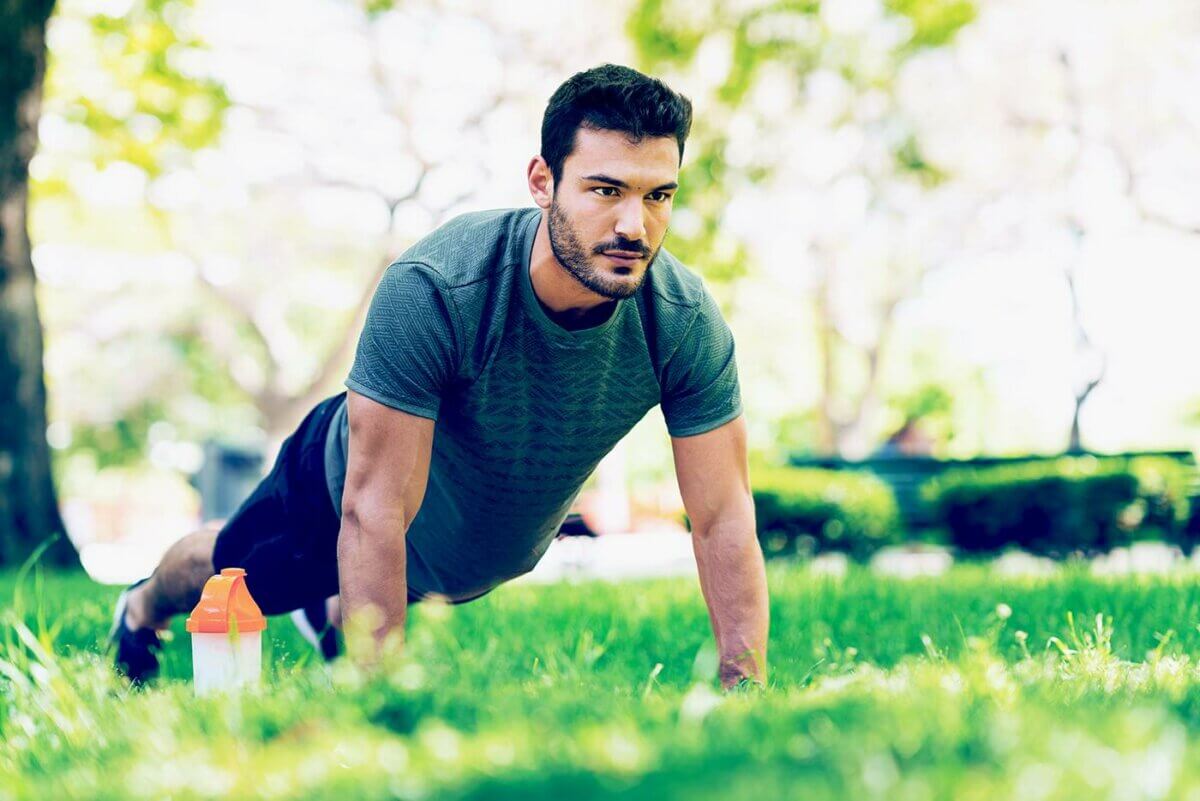How does bodyweight training compare to free weight resistance training? Could you just get away with doing only bodyweight training and see the same gains you’d see from training with free weights and machines?
Overview
What did they test? The researchers looked at the effects of body weight and free weight training on strength and hypertrophy.
What did they find? Bodyweight and free weight training were equally good at increasing hypertrophy, but the free weight group experienced greater strength gains.
What does it mean for you? Although bodyweight training can effectively increase muscle size and strength, various resistance training modalities will be better at maximizing hypertrophy and strength than bodyweight training alone.
What’s the Problem?
Achieving maximal increases in strength and hypertrophy require one to engage in frequent resistance training with a high intensity of effort over long periods of time. People looking to get bigger and stronger often find themselves performing various exercises at different repetition ranges to maximize resistance training adaptations 1. It is not uncommon to see people in the gym even perform multiple different exercises for one specific muscle group (eg, back), some using free weights (eg, barbell row), machines (eg, lat pull-down), and even their own bodyweight (eg, pull-ups). The more general one’s goals are, the more flexibility they have in terms of exercise selection as increases in hypertrophy can be achieved using a plethora of repetition ranges and loads 2, with populations like strength athletes being somewhat less flexible due to the specificity element of their sport that requires them to practice specific movement patterns (eg: the squat).
As it stands, we know that maximizing hypertrophy comes down mostly to the following:
- Performing enough training volume (>10 sets per muscle group per week) 3
- Training at long muscle lengths (i.e., when the muscle is fully stretched) 4
- Training very close to momentary failure (i.e., to the point when you’re unable to perform another repetition despite attempting to do so) 5
- Performing a variety of exercises that “fully” target each muscle (e.g., squats and leg extensions for the quads) 6
For strength, things are different as the definition of strength can vary. Although someone engaging in resistance training, even if that is mostly done in higher repetition ranges (eg, 12-20 reps), will become stronger, strength is usually conceptualized as “maximal strength,” often measured using a 1-repetition-maximum test (1RM). Maximizing 1RM strength on any particular lift comes down to the following:
- Using heavy loads (>80%1RM) 1
- Performing enough training volume (5-12 sets per exercise per week) 7
- Although training at close proximity to failure is not necessary, training with heavy loads may lead to relatively close proximities to failure 5
- Training with a range of motion specific to the range of motion of the exercise that one wants to get stronger on (eg, powerlifting depth squat) 4
Now, just because the above “principles” need to be in place to maximize strength or hypertrophy adaptations, this does not mean that one cannot get meaningfully stronger or bigger, despite not adhering fully to the above. For example, a person who trains very close to failure and over time increases their strength in the 6-12 repetition range can still experience significant increases in 1RM strength 7, and someone who performs less than 10 sets per muscle group per week can still make substantial gains in muscle size 8.

Bodyweight exercises, like push-ups, chin-ups and even pistol squats, are time-efficient and cost-effective exercises that can be performed by almost anyone without the need for much, if any, equipment allowing for total body training and promoting increases in both strength and hypertrophy. Although often misrepresented as “beginner” exercises, bodyweight exercises are performed by even the most experienced of lifters, including competitive strength and physique sport athletes. At the end of the day, your bodyweight serves as resistance and as long as you can adhere to most of the above principles, you can utilize that resistance to make gains. Some people even go as far as to train solely using bodyweight exercises, a type of training that is often referred to as “calisthenics” training. Fun fact, the word “calisthenics” comes from the Greek words “kallos” (beauty) and “sthenos” (strength). Calisthenics are defined as a“ form of strength training consisting of a variety of bodyweight movements that exercise large muscle groups, such as standing, grasping, pushing, etc.'' 9. Calisthenics can definitely be effective in increasing hypertrophy and strength with some studies even showing that progressive calisthenic push-up training has been shown to be equally effective in promoting similar muscle hypertrophy and 1RM bench press strength increases 10.
But how do bodyweight exercises compare to free-weight exercises for hypertrophy and strength? Can you base your whole training program on bodyweight exercises or are they just another tool in your training arsenal?
This study by Ogawa et al explored the “effects of free weight and body mass-based resistance training on thigh muscle size, strength and intramuscular fat in healthy young and middle-aged individuals”.







